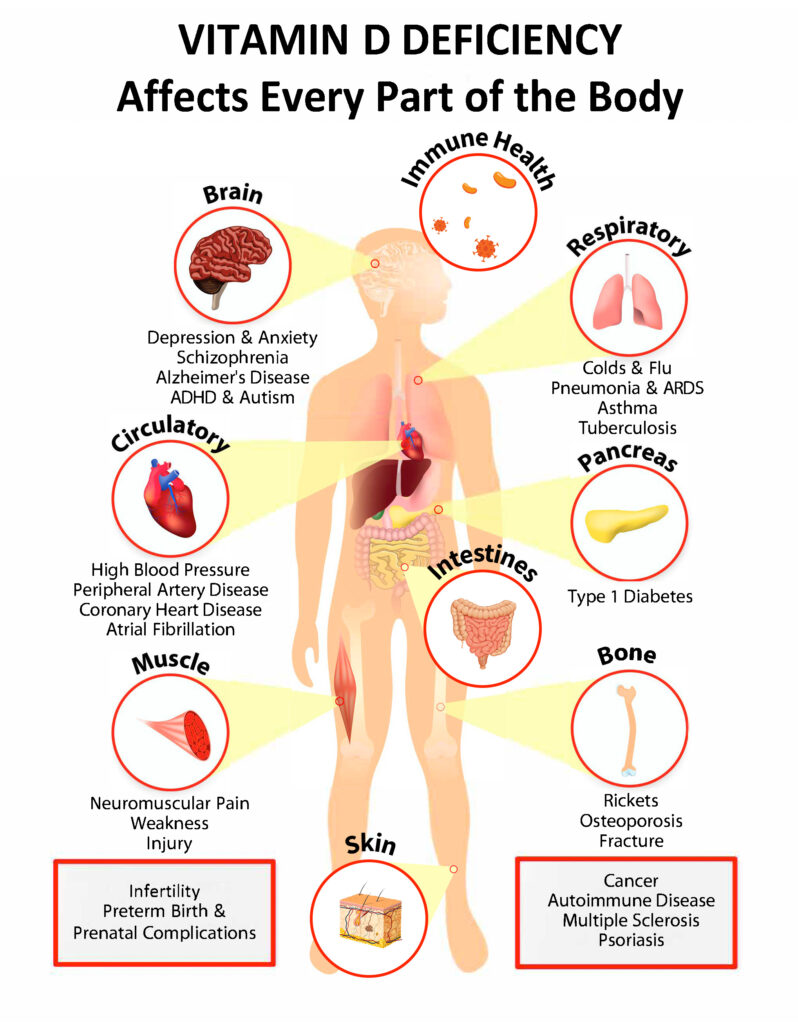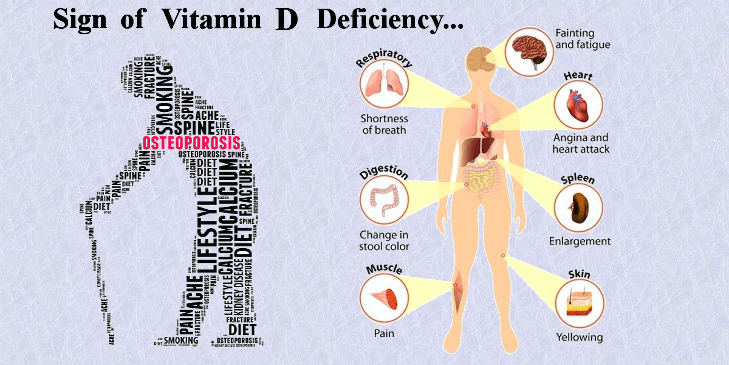Vitamin D is a fat-soluble vitamin
A fat-soluble vitamin, vitamin D, is extremely important to the human body. Of all the benefits vitamin D provides the most important is its role in retaining calcium for the body and helping to support bone health. Interestingly, the body prepares vitamin D when the skin is exposed to sunlight. A person can also increase their dose of vitamin D by taking supplements.
What happens when your body doesn’t have enough vitamin D?
Vitamin D deficiency in the body affects the bones, causes bone problems, impairs the body’s immunity, leads to many heart diseases, causes autoimmune problems, triggers the onset of neurological diseases, marks, and causes infection. It also causes complications in pregnant women and is also the cause of certain types of cancer such as breast, prostate and colon.
What are unusual symptoms of vitamin D deficiency?
Recurrent disease is very common; however, not many are aware of its association with vitamin D deficiency. Since vitamin D supports immunity, its deficiency affects the body’s strength to fight off pathogens. Because a person gets sick many times. Persistent fatigue is another sign why you need to monitor your vitamin D levels. If you’re tired all the time for no other reason, it could be due to vitamin D. This can affect your energy level and can also affect your mood to do new things.
Depression is another possible indicator of vitamin D deficiency. Persistent tiredness and fatigue can affect your mental health. Depression can easily affect these people. Massive hair loss and poor hair growth. Low vitamin D affects hair and not many of us know about it. So next time, if you don’t see any change in your hair loss despite trying various medications and shampoos, get a vitamin D test.
Skin rashes and acne are also very common in people who do not have enough vitamin D. In these people, the skin also grows quite quickly.
Who is most at risk?
People who have limited exposure to sunlight are more likely to be deficient in vitamin D. Diets low in vitamin D are more common in people who have milk allergies or lactose intolerance and who eat half-vegetarian diets or vegetarian, says one report. Breastfed infants, older adults, people with darker skin, people with conditions that limit fat absorption, and people who are obese or have had gastric bypass surgery are more likely to be deficient in vitamin D.
Obese people have lower levels of vitamin D in their blood. Vitamin D is stored in excess adipose tissue, but it is not readily available for the body to use when it is needed. Vitamin D is necessary to reach levels blood levels. Higher doses of vitamin D supplementation may be necessary. Conversely, blood levels of vitamin D rise when obese people lose weight.”
What is the ideal intake of vitamin D per day?
The ideal amount of vitamin D is 10 to 20 micrograms. However, for some people it can go up. But it is recommended to consume no more than 100 micrograms of vitamin D. If possible; it is always good to consult your doctors before taking any supplements.
Vitamin D toxicity.
While on the one hand you shouldn’t let your body become deficient in vitamin D, on the other hand you shouldn’t overdo it.
Vitamin D toxicity occurs when there is too much vitamin D in the body. This is mainly due to excessive consumption of supplements. Symptoms of vitamin D toxicity are anorexia, weight loss, irregular heartbeat, and hardening of the blood vessels due to increased calcium levels in the body.
What is affected by vitamin D deficiency?

Anyone can be deficient in vitamin D, including infants, children, and adults. Vitamin D deficiency may be more common in people with high skin melanin content (darker skin) and who wear clothing that covers the skin a lot, especially in Middle Eastern countries.
How common is vitamin D deficiency?
Vitamin D deficiency is a common worldwide problem. Around one billion people worldwide are deficient in vitamin D, while 50% of the population is deficient in vitamin D.
How is vitamin D deficiency diagnosed?
Health care providers don’t usually order routine vitamin D level checks, but they may need to check your levels if you have certain medical conditions or risk factors for vitamin D deficiency and/or have symptoms of it.
Your provider may order a blood test to measure your vitamin D levels. There are two types of tests they may order, but the most common is 25-hydroxyvitamin D, known as 25(OH) D for short.
How is vitamin D deficiency treated?
The goals of treating and preventing vitamin D deficiency are the same: to achieve and then maintain adequate levels of vitamin D in your body.
Although you may want to consider eating more foods that contain vitamin D and getting more sunlight, your health care provider will recommend taking vitamin D supplements.
Vitamin D comes in two forms: D2 and D3. D2 (ergocalciferol) comes from plants. D3 (cholecalciferol) comes from animals. You need a prescription to get D2. D3, however, is available without a prescription. Your body absorbs D3 more easily than D2. Work with your health care provider to find out if you need a vitamin supplement and how much to take, if needed.





